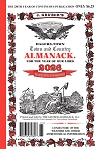The Art of Canning Part 3
PACKING THE JARS
Raw Pack (or Cold Pack)
Pack raw fruit into jars and cover with boiling hot sugar syrup, fruit juice or hot water. It is always necessary to leave a head space between the lid and the top of food or liquid. This space is needed for the bubbling of liquids and fruit expansion. If the jars are filled too full the contents may overflow during processing. The amount of head space is usually between 1/8 and 1/2 inch but check the individual recipe for the exact amount of head space.
Hot Pack
Heat fruit in a sugar syrup (see recipe below), water, or over steam before packing. Fruits with a high juice content and tomatoes can be pre-heated without adding liquid and then packed in the juices that cook out.
SIMPLE SUGAR SYRUP RECIPE

Be sure to pack each jar to within 1/4 inch of top or as specified in individual recipe. For any non-liquid foods (such as peaches, pears, whole tomatoes and vegetables), it will be necessary to remove any trapped air bubbles by running a rubber spatula or table knife gently between the solid food and the edge of the jar. Add a little more hot syrup, juice or hot water as needed. Wipe the rim and screw threads thoroughly with a clean damp cloth, place lid on top and screw bands on tightly and evenly to hold rubber sealing lid (or sealing ring) in place. Be careful not to over-tighten the lid. Place the jars on the rack immediately after packing and lower it into the canner of boiling water. All of the jars should be covered by at least 1 to 2 inches of boiling water. Add additional boiling water if needed. Cover pot tightly with the lid. When the water comes to a rolling boil, start to count the processing time using the timer or the second hand of a clock. Boil gently and steadily for the time recommended for the food being processed. Jars that will be filled with food and processed for less than 10 minutes in a boiling water bath canner need to be sterilized by boiling in water for 10 minutes. NOTE: If you are at an altitude of 1000 feet or more, boil an additional minute for each additional 1000 feet of altitude. (i.e.) 5000 feet=5 minutes longer. . When the cooking time is up, remove jars at once and place on a rack or on towels.
After jars have thoroughly cooled (between 12 and 24 hours after processing), it is time to check that a seal has been achieved. To do this, simply press down on the center of the lid. The lid should be concaved and should not move at all when pressed. Another method by many is to gently tap the lid with the bottom of a teaspoon. If the jar is sealed correctly, it will make a high-pitched sound. If it makes a dull sound it means the lid is not sealed or possibly that food may be contact with the underside of the lid. Those will need to be repacked. Do not be alarmed if during the first the first hour or so of cooling you start to hear a popping sound come from the jars. This is a good sound to hear as it most often means that the vacuum effect has taken place which causes the lids to pop down snuggly and seal completely.
After jars have cooled thoroughly, the screw bands may be removed if desired. Be sure to label all of the jars, identifying its contents and processing date. Store jars in a cool dark, dry place.



















